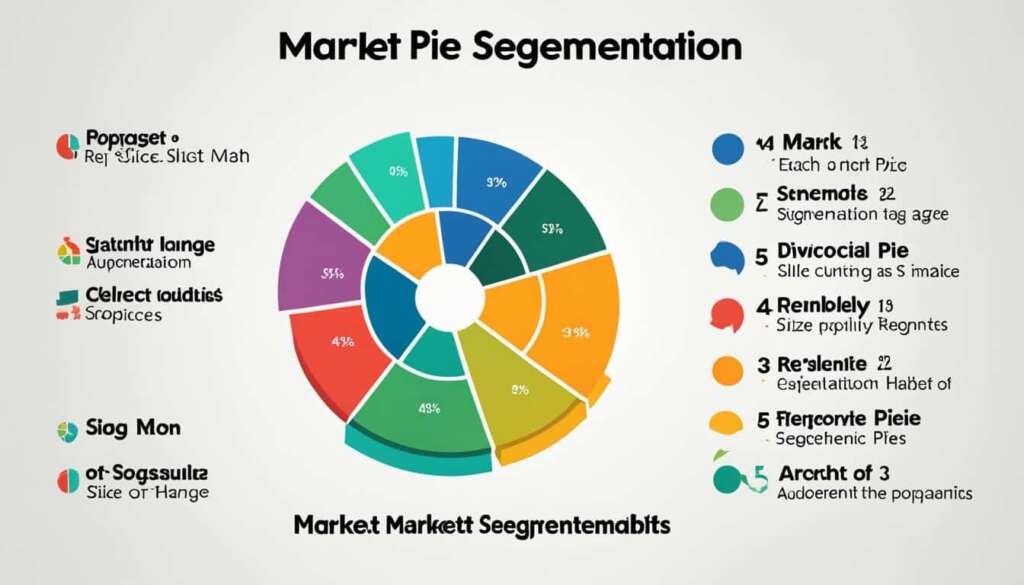Table of Contents
Market segmentation is a crucial aspect of successful business strategies. By dividing a target market into specific groups based on demographics, needs, priorities, common interests, and other psychographic or behavioral criteria, companies can effectively tailor their product development and marketing strategies.
When businesses understand their market segments, they gain a competitive advantage. They can create stronger marketing messages that resonate with their target market, implement targeted digital advertising campaigns, develop effective marketing strategies, increase brand loyalty, differentiate from competitors, identify niche markets, and drive growth and profits.
Popular brands like American Express, Mercedes Benz, and Best Buy have successfully utilized market segmentation to increase sales, develop better products, and engage with prospects and customers.
In this article, we will explore the basics of market segmentation, how to determine your market segments, and the benefits and limitations of this strategy.
The Basics of Market Segmentation
Market segmentation is an essential strategy for businesses to effectively target specific customer groups. There are various categories of market segmentation, each with its own distinct characteristics and benefits.
1. Demographic Segmentation
Demographic segmentation involves dividing customers based on attributes such as age, education, income, gender, occupation, and nationality. This segmentation category helps businesses understand the diverse demographics of their target market and tailor their strategies accordingly.
2. Geographic Segmentation
Geographic segmentation focuses on dividing customers based on their physical location. This category enables businesses to customize their marketing messages and offers to suit the unique needs and preferences of customers in different geographical areas.
3. Firmographic Segmentation
Firmographic segmentation looks at organizational attributes such as company size and number of employees. By segmenting based on firmographics, businesses can identify target companies within a specific industry or sector and tailor their marketing efforts accordingly.
4. Behavioral Segmentation
Behavioral segmentation divides customers based on their behaviors and decision-making patterns. This category allows businesses to understand customers’ purchasing habits, brand loyalty, and engagement levels. By targeting distinct behavioral segments, businesses can develop personalized marketing strategies and experiences.
5. Psychographic Segmentation
Psychographic segmentation considers the psychological aspects of consumer behavior, such as lifestyle, personality traits, values, opinions, and interests. Understanding the psychographics of customers helps businesses connect with their target audience on a deeper emotional level and develop relevant marketing campaigns.
Each type of market segmentation provides businesses with valuable insights into their target audience and allows them to effectively tailor their marketing strategies. By implementing the right segmentation categories, businesses can optimize their marketing efforts and engage with customers in a more meaningful way.
| Segmentation Category | Description |
|---|---|
| Demographic Segmentation | Dividing customers based on attributes such as age, education, income, gender, occupation, and nationality. |
| Geographic Segmentation | Dividing customers based on their physical location. |
| Firmographic Segmentation | Dividing customers based on organizational attributes, such as company size and number of employees. |
| Behavioral Segmentation | Dividing customers based on behaviors and decision-making patterns. |
| Psychographic Segmentation | Dividing customers based on lifestyle, personality traits, values, opinions, and interests. |
How to Determine Your Market Segments
To effectively cater to the needs of different customer groups, businesses must determine their market segments. This involves a systematic approach that includes five primary steps:
- Define your target market: Start by evaluating the need for your products and services in the marketplace. Understand your position and identify the specific customer groups you want to target.
- Segment your market: Once you have defined your target market, segment it based on relevant criteria. Consider demographic factors such as age, income, gender, and occupation. Explore geographic elements like location and cultural characteristics. Utilize firmographic data such as company size and industry. Analyze behavioral patterns and engagement metrics. Incorporate psychographic insights like interests, values, and opinions.
- Understand your target market: To gain a deeper understanding of your target market, conduct thorough research. Implement surveys, focus groups, and polls to gather valuable information about customer preferences, pain points, and motivations.
- Create customer segments: Analyze the collected data to create distinct customer segments. Identify common characteristics and needs within each segment. This step allows you to refine your target market and tailor your marketing efforts accordingly.
- Develop tailored marketing strategies: Finally, develop and implement marketing strategies that cater to each customer segment. By crafting messages and offerings that resonate with specific groups, you can effectively attract and retain customers.
This process of market segmentation enables businesses to identify their target customers and align their products, services, and marketing efforts to meet their needs effectively.
| Benefits of Market Segmentation: | Limitations of Market Segmentation: |
|---|---|
| 1. Increased resource efficiency | 1. Higher upfront marketing expenses |
| 2. Stronger brand image | 2. Need for accurate data to ensure representative market segments |
| 3. Greater potential for brand loyalty | |
| 4. Stronger market differentiation | |
| 5. Targeted digital advertising |
Benefits and Limitations of Market Segmentation
Market segmentation offers several benefits to businesses. One of the key advantages is increased resource efficiency. By focusing on specific customer groups, companies can optimize their use of resources and streamline their marketing efforts. This targeted approach allows businesses to allocate their time, energy, and budget more effectively, ultimately resulting in higher profitability.
Another benefit of market segmentation is the ability to create a stronger brand image. By tailoring messages and marketing strategies to each segment, businesses can connect with their target audience on a deeper level. This intentional and targeted approach helps companies build a brand that resonates with their customers, leading to increased trust and loyalty.
Speaking of loyalty, market segmentation also offers businesses the opportunity to foster stronger brand loyalty. By understanding the unique needs and preferences of each segment, companies can develop personalized offerings and experiences that build strong connections. When customers feel that a brand understands and caters to their specific needs, they are more likely to become loyal advocates.
Market differentiation is another advantage of market segmentation. By customizing branding and messaging to target segments, businesses can stand out from their competitors. This differentiation allows companies to position themselves uniquely in the market, effectively setting themselves apart and attracting customers who resonate with their specific value proposition.
Lastly, market segmentation enables the implementation of targeted digital advertising strategies. Through detailed customer insights and segmentation data, businesses can refine their online advertising efforts, ensuring that they reach the right audience with the right message at the right time. This level of precision maximizes the effectiveness of digital advertising campaigns, leading to higher conversion rates and a stronger return on investment.
However, it is important to note that market segmentation also has its limitations. One such limitation is the higher upfront marketing expenses required. Developing tailored strategies for each segment can involve additional costs, including research, creative development, and campaign execution. Additionally, accurate data is crucial to ensure representative market segments. Without reliable data, businesses run the risk of misidentifying their target audience and making ineffective marketing decisions.
Despite these limitations, market segmentation remains a powerful tool for businesses to optimize their marketing efforts and improve profitability. By leveraging the benefits of increased resource efficiency, a stronger brand image, greater potential for loyalty, market differentiation, and targeted digital advertising, companies can effectively reach and engage with their target customers, driving growth and success in today’s competitive landscape.
FAQ
What is market segmentation?
Market segmentation is the practice of dividing a target market into specific groups based on demographics, needs, priorities, common interests, and other psychographic or behavioral criteria.
Why is market segmentation important for businesses?
By understanding market segments, businesses can tailor their product, sales, and marketing strategies to better meet the needs of different customer groups.
What are the primary types of market segmentation?
The primary types of market segmentation are demographic segmentation, geographic segmentation, firmographic segmentation, and behavioral segmentation.
How can businesses determine their market segments?
Businesses can determine their market segments by defining their target market, segmenting the market using different factors, understanding the target market through research, creating customer segments, and developing tailored marketing strategies.
What are the benefits of market segmentation?
Market segmentation offers benefits such as increased resource efficiency, a stronger brand image, greater potential for brand loyalty, stronger market differentiation, and the ability to implement targeted digital advertising strategies.
Are there any limitations to market segmentation?
Yes, market segmentation comes with some limitations, including higher upfront marketing expenses and the need for accurate data to ensure representative market segments.












